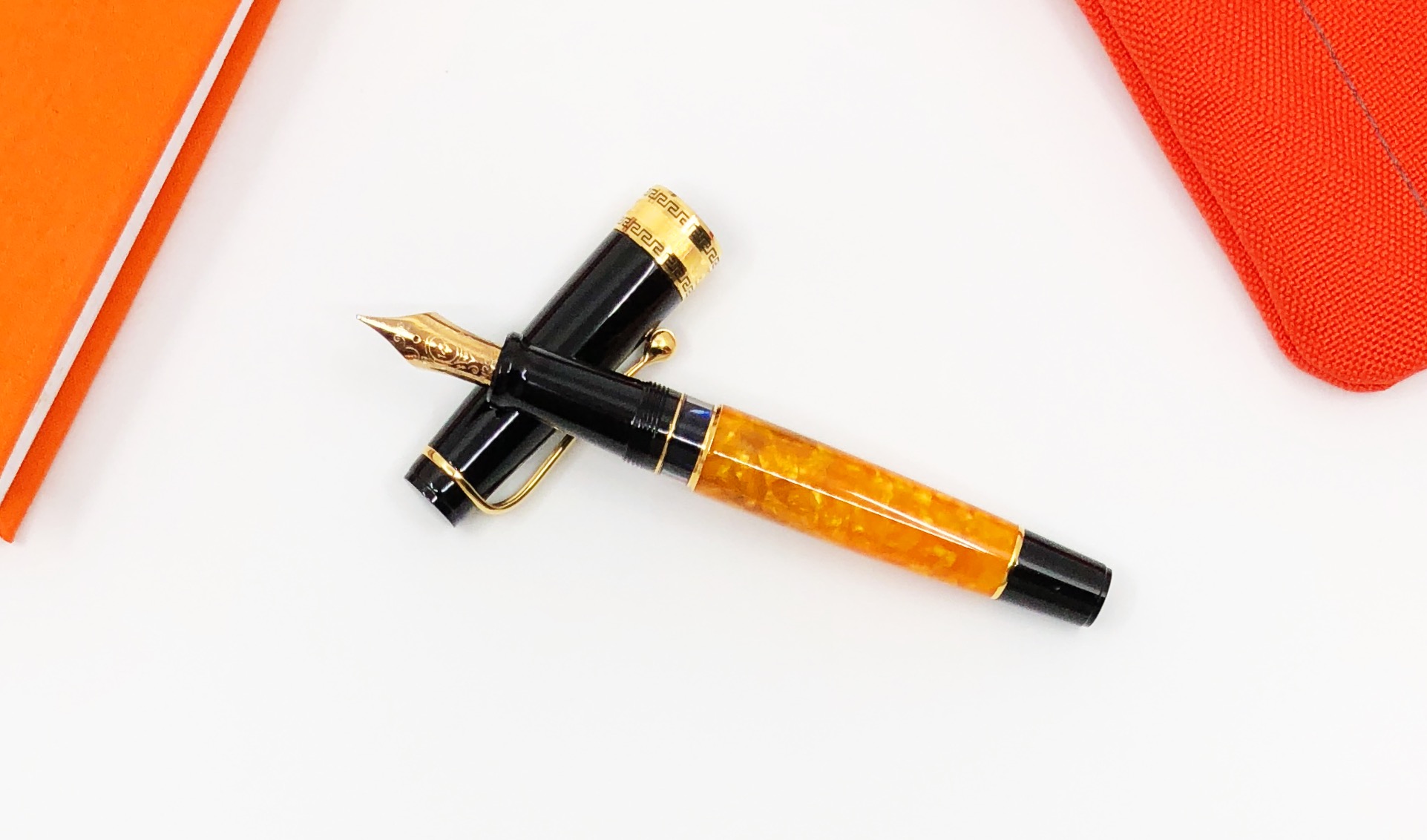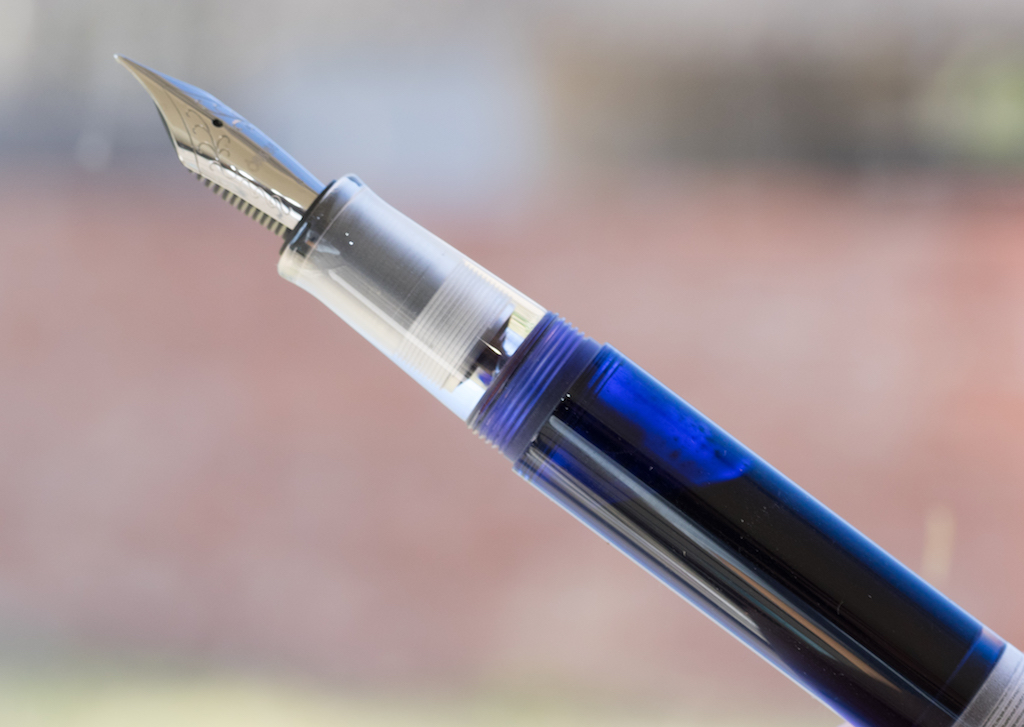How do you review a product you have already reviewed, and already love? How do you keep it fresh? How do you say something new? I’m not sure I have all of the answers to those questions, but let’s find out. One thing I do know: I love the Aurora Optima.
I knew I loved it from the first time I picked one up, which ended up in the purchase of my first, the Optima Red Demonstrator. And yes, I still think just as highly of it now, even though I had to send it to the shoptima. It’s a pen that fits me perfectly.
Until this week, I wasn’t sure why it was so perfect for me. Then I read a review of the Aurora Optima 365 on Hand Over That Pen. Pam, Queen of Tiny Handwriting, First of Her Name, said this about the Optima:
“ I really love the Optima’s shape and size. Why you ask? Because, to me, the Aurora Optima 365 is a gaudier Sailor Progear with the use of a wider, more ostentatious cap band.”
That explains a lot about me and my likes, doesn’t it?
Aurora Optima (Top), Sailor Pro Gear Bungubox 5th Anniversary Edition
Looking at pictures of the Optima and Pro Gear side-by-side the comparison is inevitable. Why didn’t I think of this before! I guess that makes the Aurora 88 and the Sailor 1911 cousins as well.
One area where they do not compare is in price. The Aurora is twice as much as the Pro Gear, but I feel it is priced correctly for what it brings to the table. You can feel the difference in your hand before even getting into the technical aspects.
First off, the Optima is a piston filler, while the Pro Gear uses a cartridge/converter filling system. And this is no normal piston either. It’s easily the most substantial I have felt in a pen, and even has a small, stealth, ink reservoir to get those last drops out until you can get it filled up again.
The Optima has a large ebonite feed, too. Does it make the ink flow better than a standard plastic feed? I’d be lying if I told you I could tell the difference. But the sheer size of it, which is mostly hidden in the section, is impressive.
The materials of this pen - in the case of the O’ Sole Mio black acrylic and marbled orange auroloide - are substantial, and beautiful. The Pro Gear acrylic barrel is lightweight in comparison. The walls of the Optima barrel are thick, and you can feel it in your hand.
Aurora has some of the best gold nibs on the market. So does Sailor. And they are completely different. Aurora’s nibs are thick, and on the firmer side for a gold nib. The medium nib in this Optima is smooth with a little give when writing, but with no bounce or variation when you push it. Sailor’s nibs are obviously finer in comparison, and do have a different feel when writing. Both offer some of the best nibs in the business.
And finally, as Pam says above, the Optima has a gaudier cap band. And it’s a good-looking gaudy! While the Pro Gear offers sleek, refined hardware, Aurora steps up the hardware game in comparison, both in size and style. I think it looks great.
So, if you like the Sailor Pro Gear, will you like the Aurora Optima? I say undoubtedly yes. It does come at a cost though, and in the case of these two pens, it is worth it to me.
(Kenro Inc. provided this product at no charge to The Pen Addict for review purposes.)
Enjoy reading The Pen Addict? Then consider becoming a member to receive additional weekly content, giveaways, and discounts in The Pen Addict shop. Plus, you support me and the site directly, for which I am very grateful.
Membership starts at just $5/month, with a discounted annual option available. To find out more about membership click here and join us!





























